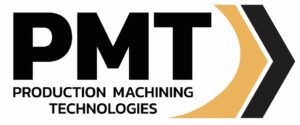Are you curious about the differences between mills and lathes or deciding which CNC machine best suits your project needs? You've come to the right place! This page aims to clarify essential concepts, practical usage, and tips for enhancing performance in machining with CNC mills and lathes. Whether you're a seasoned machinist or stepping into the world of CNC machinery, you'll find valuable insights and comparisons here to guide your decisions and improve your craft.
Mill vs Lathe and CNC Lathe vs CNC Mill
When you're exploring the realm of CNC machinery, understanding the key distinctions between a mill and a lathe is crucial. At its core, the traditional mill vs lathe debate revolves around how they manipulate the workpiece. In milling, the workpiece remains stationary while the cutting tool rotates, allowing for a variety of shapes and sizes to be crafted. This is different from a lathe, where the workpiece spins and a stationary cutting tool shapes it, primarily suited for symmetrical cylindrical objects.
Diving deeper into modern technology, the comparison between a CNC lathe and a CNC mill brings us to the arena of automation and precision. A CNC lathe excels in operations where the work requires rotational symmetry, utilizing computer programming to ensure each cut is consistent and accurate. On the other hand, a CNC mill is incredibly versatile, programmed to move along various axes, and can produce intricate parts with complex geometries that go beyond basic cylindrical shapes. This capability makes it indispensable for sophisticated engineering projects.
Choosing between these tools often depends on the specific requirements of your project. Do you need to execute detailed, complex cuts? If so, a CNC milling machine might be your best bet. Or, are you focusing on pieces that are cylindrical or require precise circular cuts? Then, consider the advantages a CNC lathe has to offer. Each machine brings its own strengths to the table, and your project goals will guide you in selecting the right tool for the job.
When to Use CNC Mill vs Lathe in Machining
As you dive into your machining projects, deciding whether to use a CNC mill or a CNC lathe can be pivotal. If your task involves creating parts with irregular contours or requires multiple types of cuts, you might lean towards a CNC mill. The ability of the milling machine to move across various axes allows for greater flexibility in both shape and size of the pieces it can produce. This makes the mill ideal for producing complex and detailed parts often needed in custom manufacturing or creative tasks.
On the other hand, if your work primarily involves the creation of parts that have rotational symmetry, using a CNC lathe might suit your needs better. The lathe’s design is perfect for crafting cylindrical or rounded items like rods or bushings with high precision and repeatability. By choosing a CNC lathe, you can achieve a smoother and more accurate surface finish, which is critical in industries where every micron counts, such as in aerospace and automotive sectors.
So, consider your project's specific requirements when selecting between a CNC mill or CNC lathe. The intricacy of the design, the type of cuts needed, and the level of precision required are all critical factors. By aligning your machining tool choice with the practical needs of your project, you ensure not only improved efficiency but also higher quality results. Whether it's for a batch of custom-made parts or a single, intricate piece, selecting the right tool saves you both time and resources.
Optimizing Mills and Lathes with CAM Software
Knowing how to effectively use CAM (Computer-Aided Manufacturing) software can drastically enhance your CNC operations, whether you choose a CNC mill or a CNC lathe. If you find yourself frequently switching between a mill and a lathe, integrating CAM software tailored to your requirements is essential. It streamlines the transition and optimizes overall performance by providing tailored toolpaths and simulation capabilities to minimize errors and machine time.
CAM software impacts machine performance significantly by automating complex calculations that otherwise take up valuable manual effort and time. For operators pondering over 'cnc vs milling machine' or deciding between 'cnc lathe vs cnc mill', CAM software plays a transformative role. It allows you to input your designs and material requirements, and then it intelligently decides the optimal cutting conditions, speeds, and feeds. This ensures each machine operates with precision, regardless of whether it's executing intricate 3D contours on a mill or precise cuts on a lathe.
Ultimately, incorporating advanced CAM solutions could be the key to scaling up the efficiency and quality of your milling and lathe operations. Not only does it reduce the likelihood of costly errors, but it also enhances the capabilities of your equipment, allowing them to produce higher-quality parts faster. When stuck in the 'mill vs lathe' debate, remember that the right CAM software can enhance the capability of each, bridging the gap between different machining processes and boosting your project's overall success.
In your journey to make the most out of your CNC setups, choosing the right CAM software, like ESPRIT, is a crucial step. At PMT, we not only provide ESPRIT CAM software but also assure dedicated support and training to ensure you get the best out of your investment. This training helps you handle both CNC mills and lathes with higher proficiency and reduced error margins. Elevate your CNC machine's potential and see the difference in your project outcomes. Remember, with PMT and ESPRIT by your side, the transition between different machining processes becomes seamless and substantially more effective.
